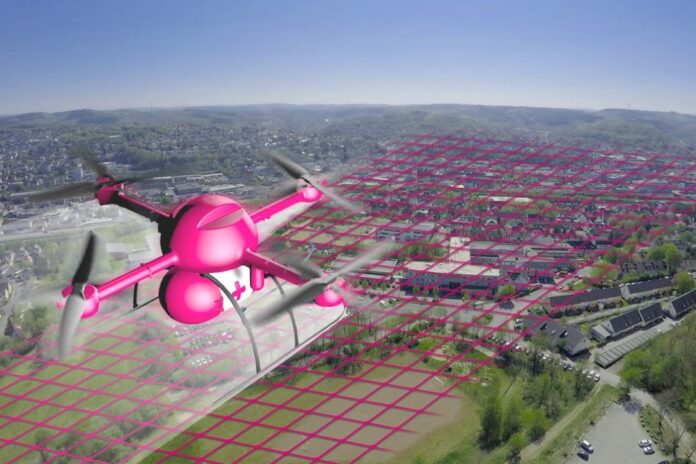It has joined the ongoing research project KODRONA (for cooperative drone technology for medical applications) to speed up lab tests for sick children.
Working with the university city of Siegen, Deutsche Telekom (DT) has become a research partner and will provide a new kind of campus network to control drones remotely, using 4G.
The network that will be available exclusively for communication between the drone and the control centre and enable reliable data transmission even during temporary load peaks.
Live images
“Since the quality of the mobile phone coverage is decisive for the test operation, we carried out a real-time survey during the drone flight,” says Thomas Runge, Head of Economic Development of the City of Siegen.
“To ensure that pilots are allowed to fly the drones outside of their visual range, the aircraft transmit live images from a built-in camera to the control centre. This requires a high-performance network and low latency.
“A particularly fast reaction time of the communications network is essential for delay-free control,” emphasises Hagen Rickmann, responsible for the Business Customers at Telekom Deutschland.
This means that images and control commands are transmitted even faster and support the safe flight of the drones.
The campus network is implemented using the existing antennas and the product Campus-Netz M.
The use of drones is included in a feasibility study: the next stage comprises a test operation under real conditions.
This will examine the dependencies of drones’ deployment on the weather, integration into operational processes and official communication interfaces, and cooperation with other parties. Subject to follow-up funding, test operations will commence at the beginning of 2021.
Faster test results for patients
KODRONA is a pilot project in North Rhine-Westphalia that is investigating the use of drones in medical environments.
The Federal Ministry of Transport and Digital Infrastructure has already funded the first phase of the project, and already drones fly back and forth between the DRK children’s hospital and the district hospital in Siegen.
Samples from the young patients are regulatory flown across 2.5 km flight route to a central lab to speed the test results at a height of up to 80m. The transport adapts to the changing requirements: at the moment, the lab samples are transported several times a day by taxi.



